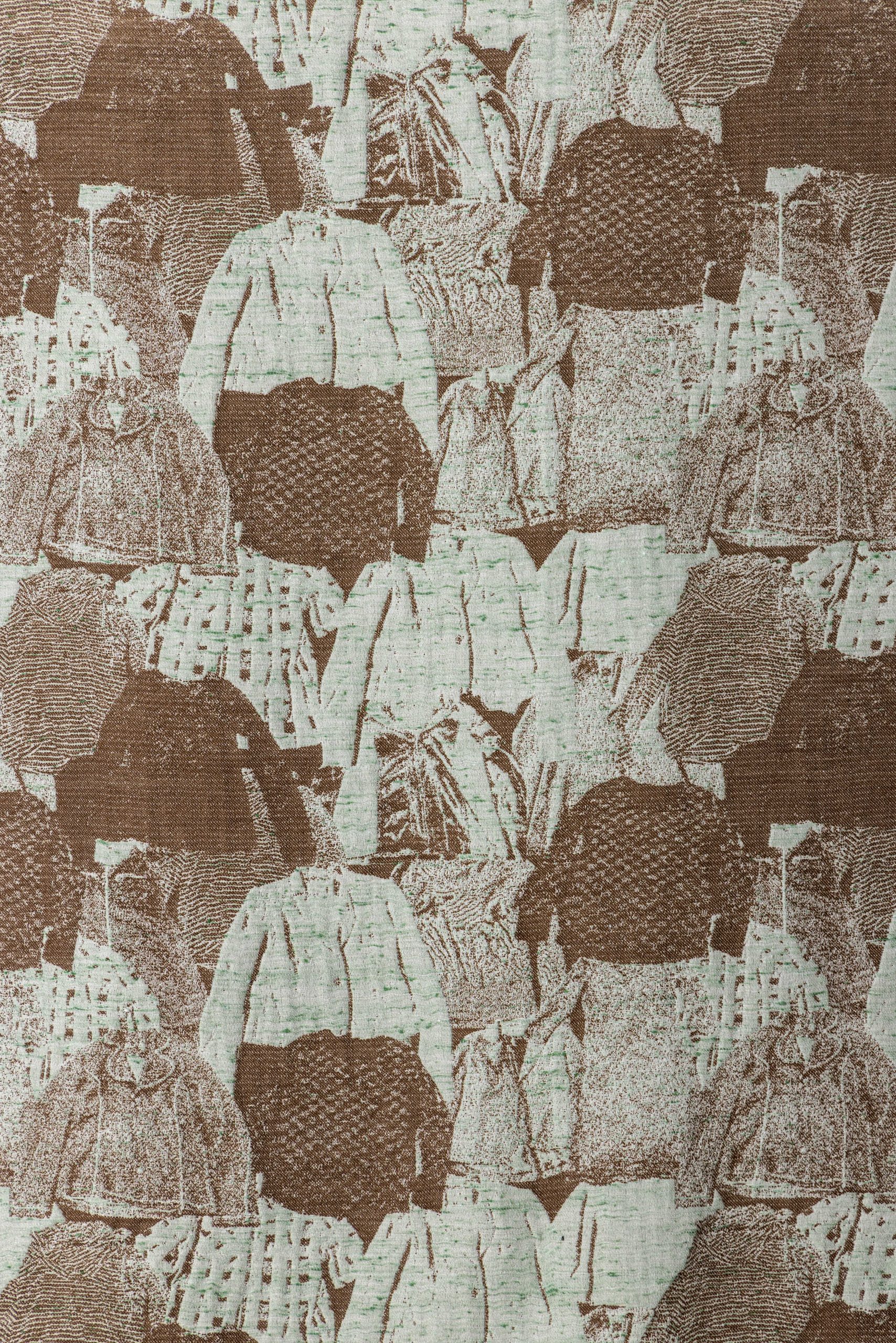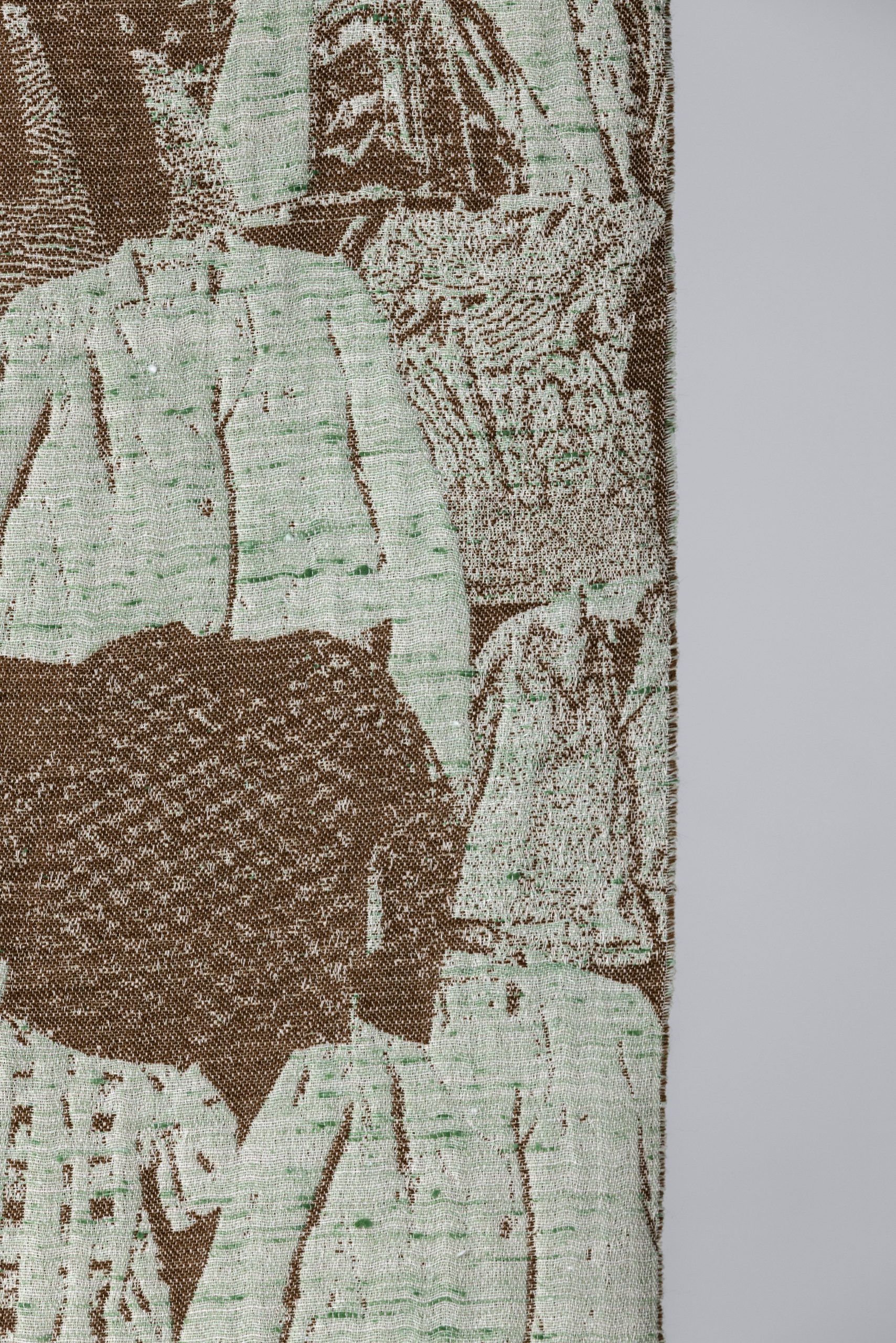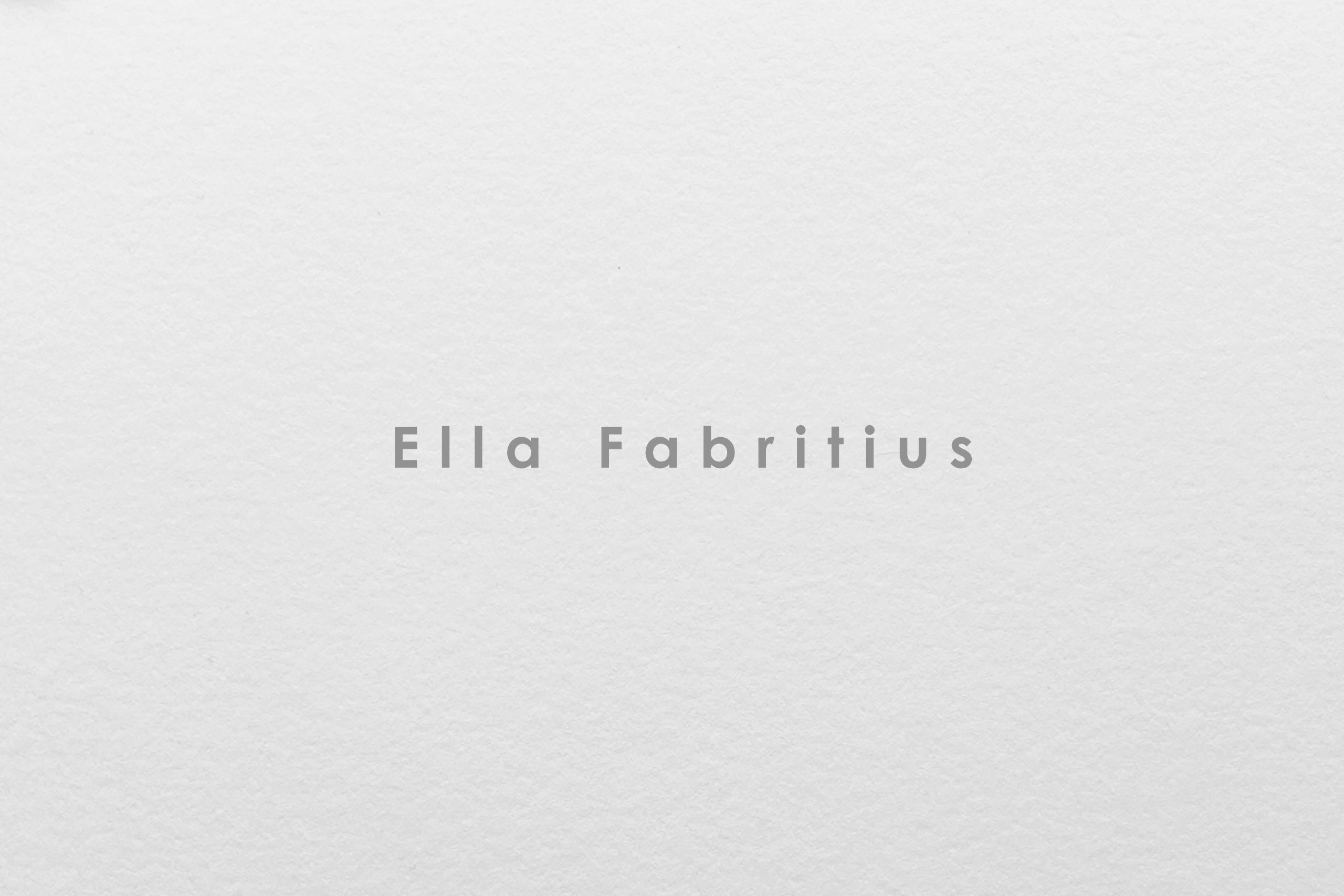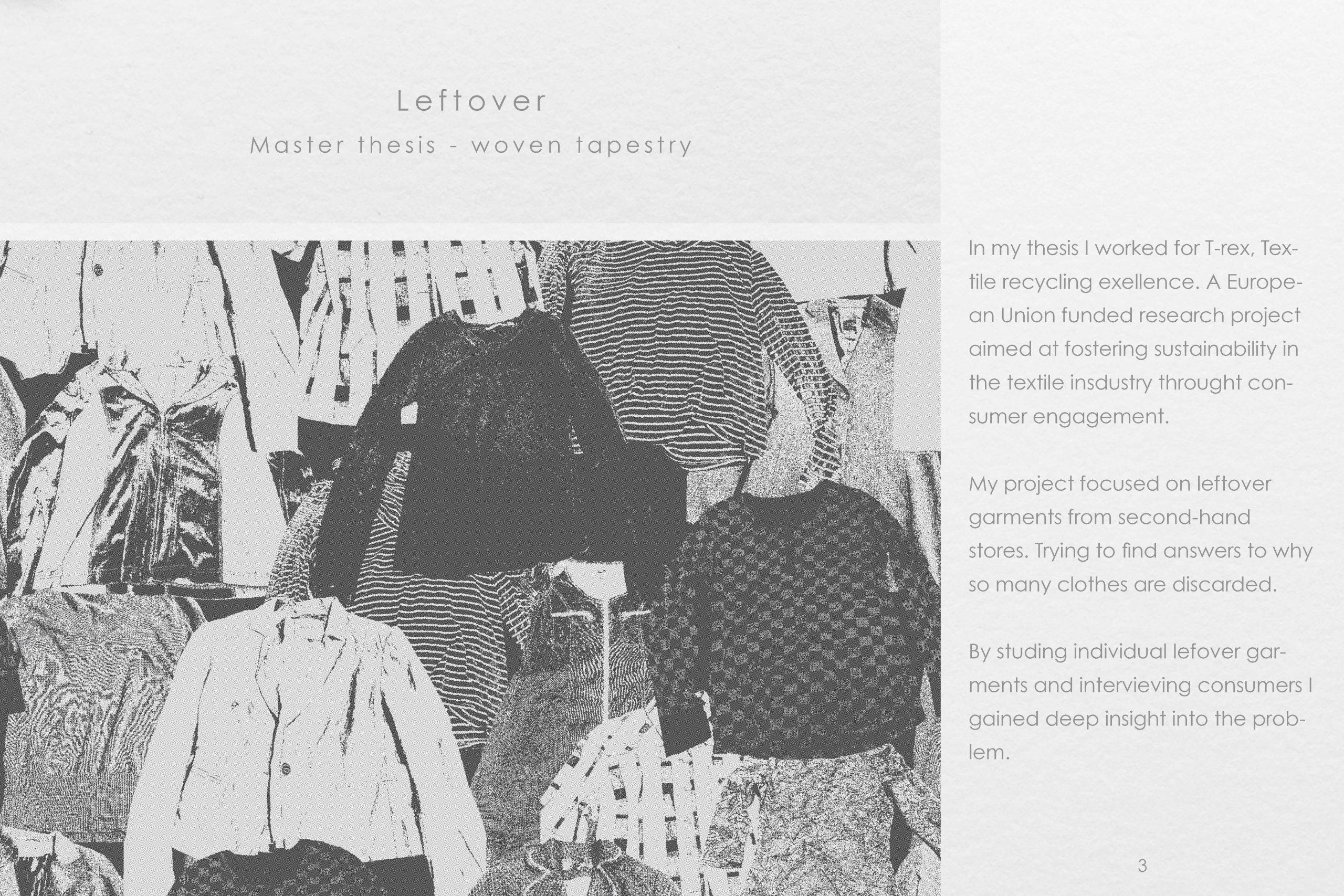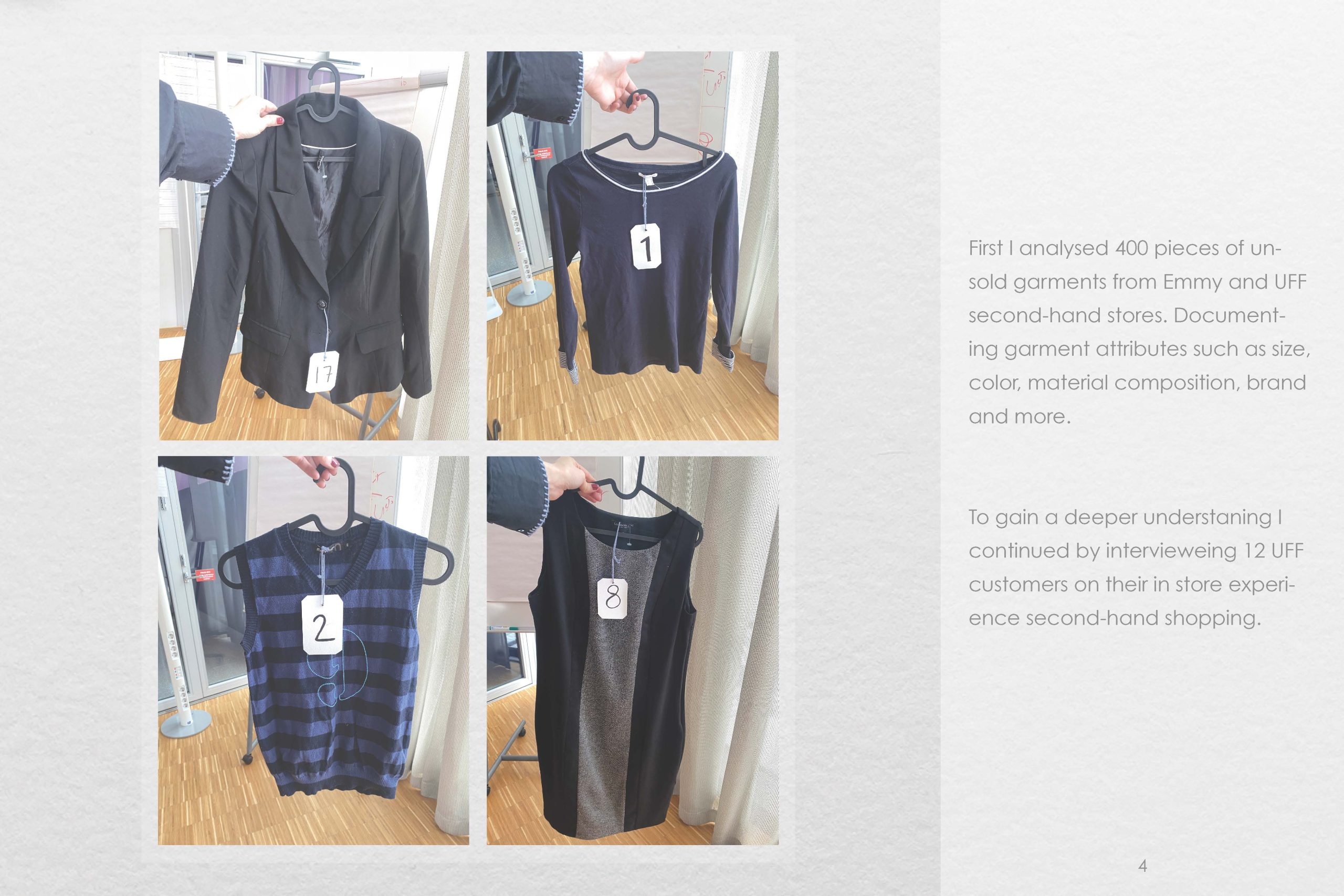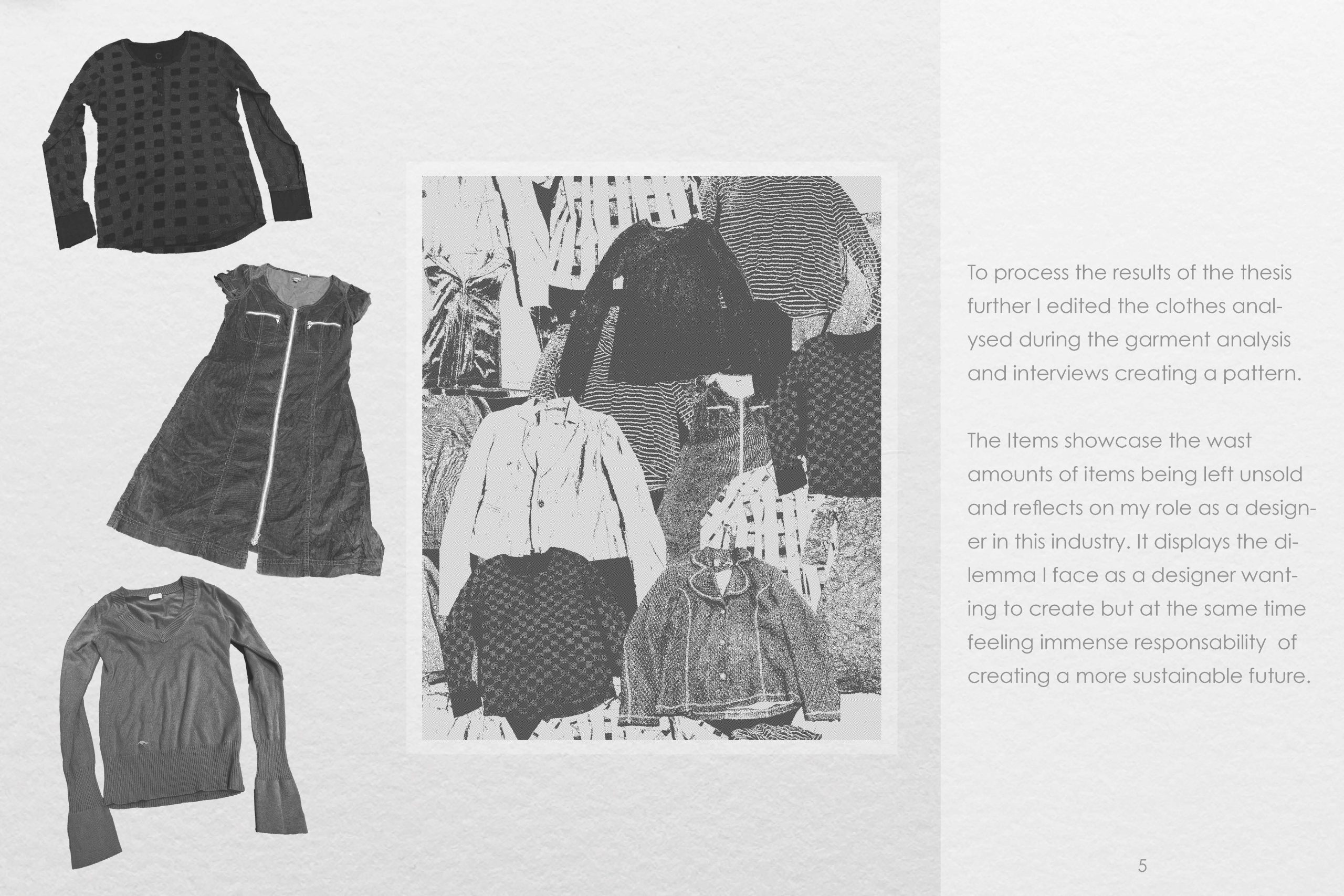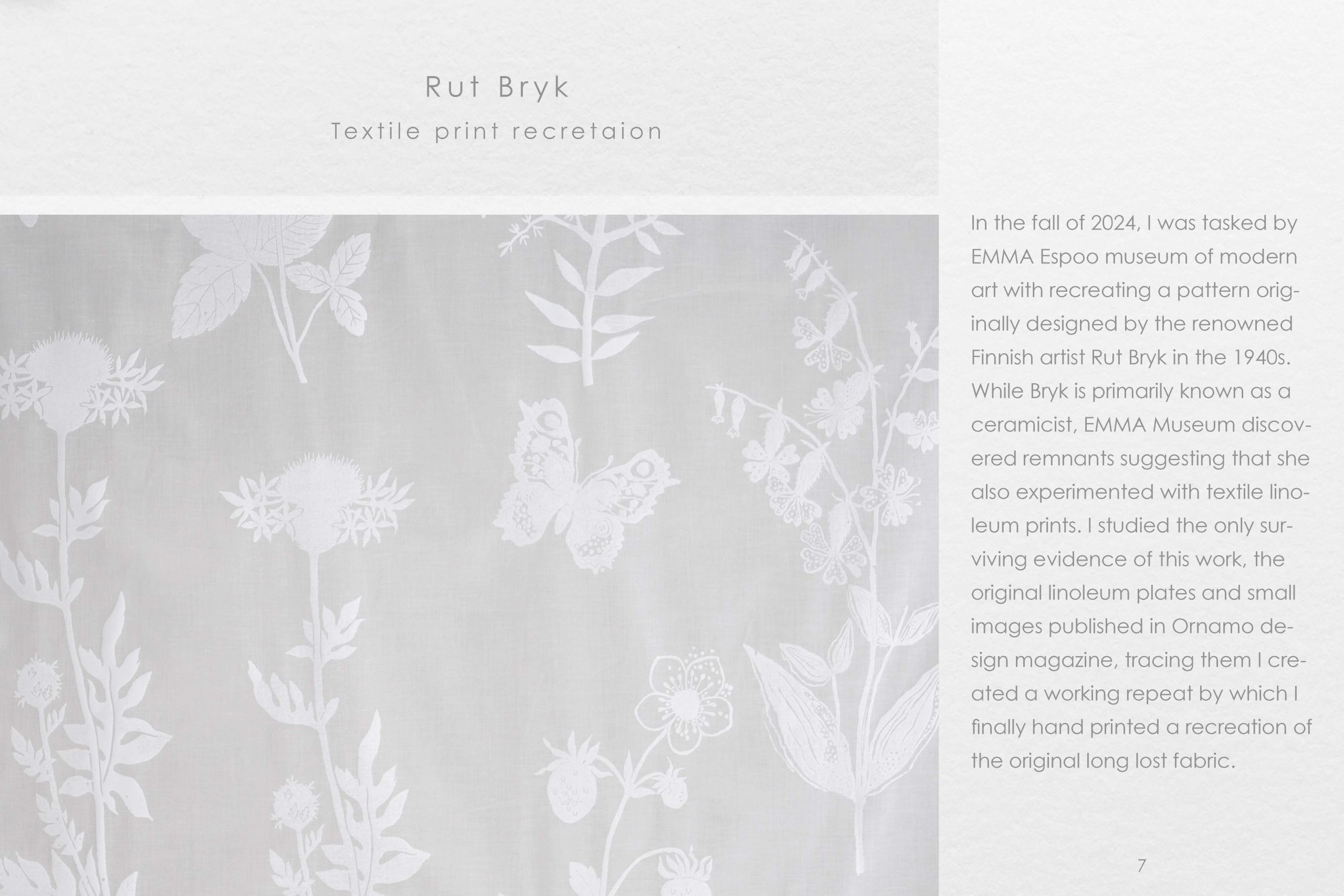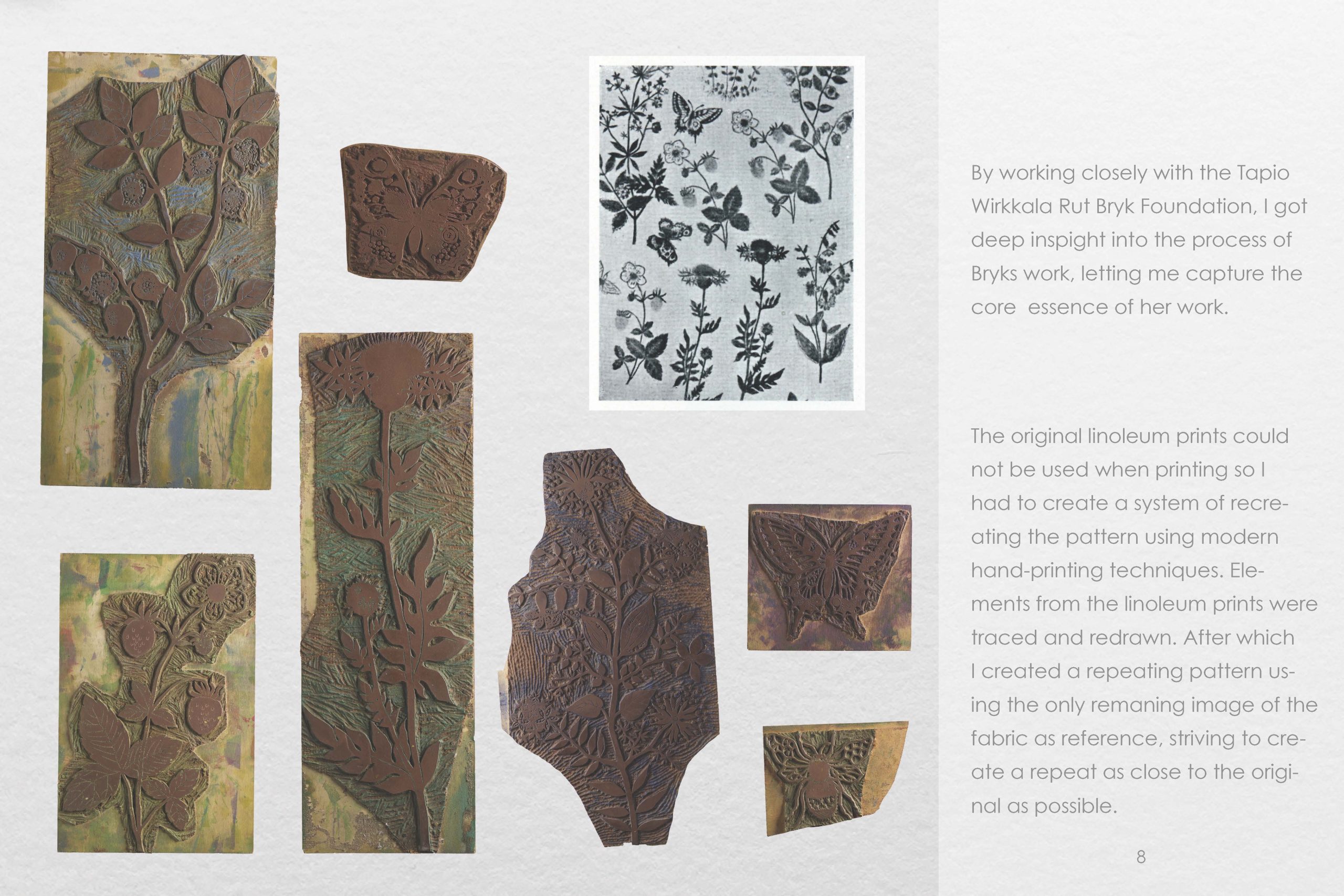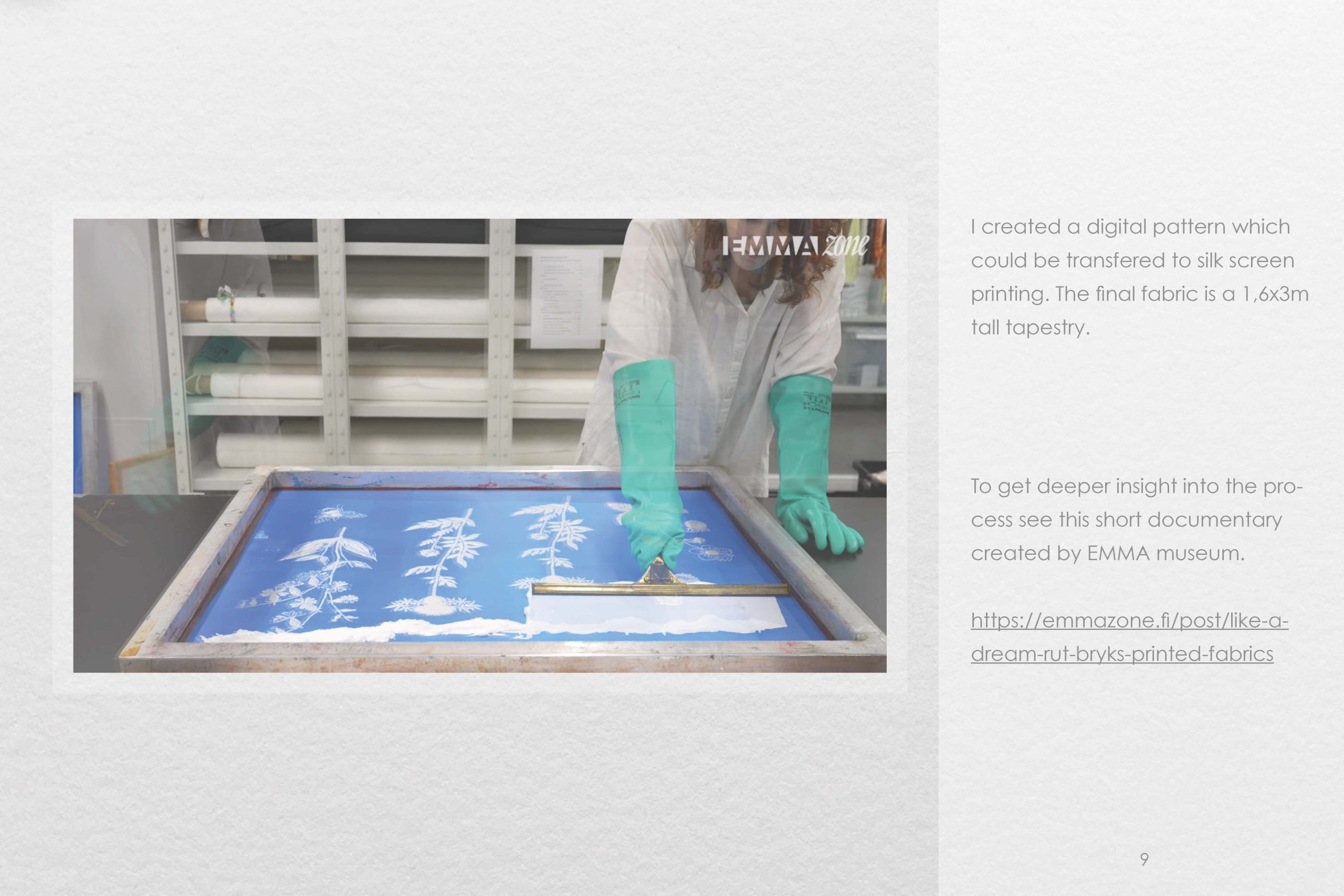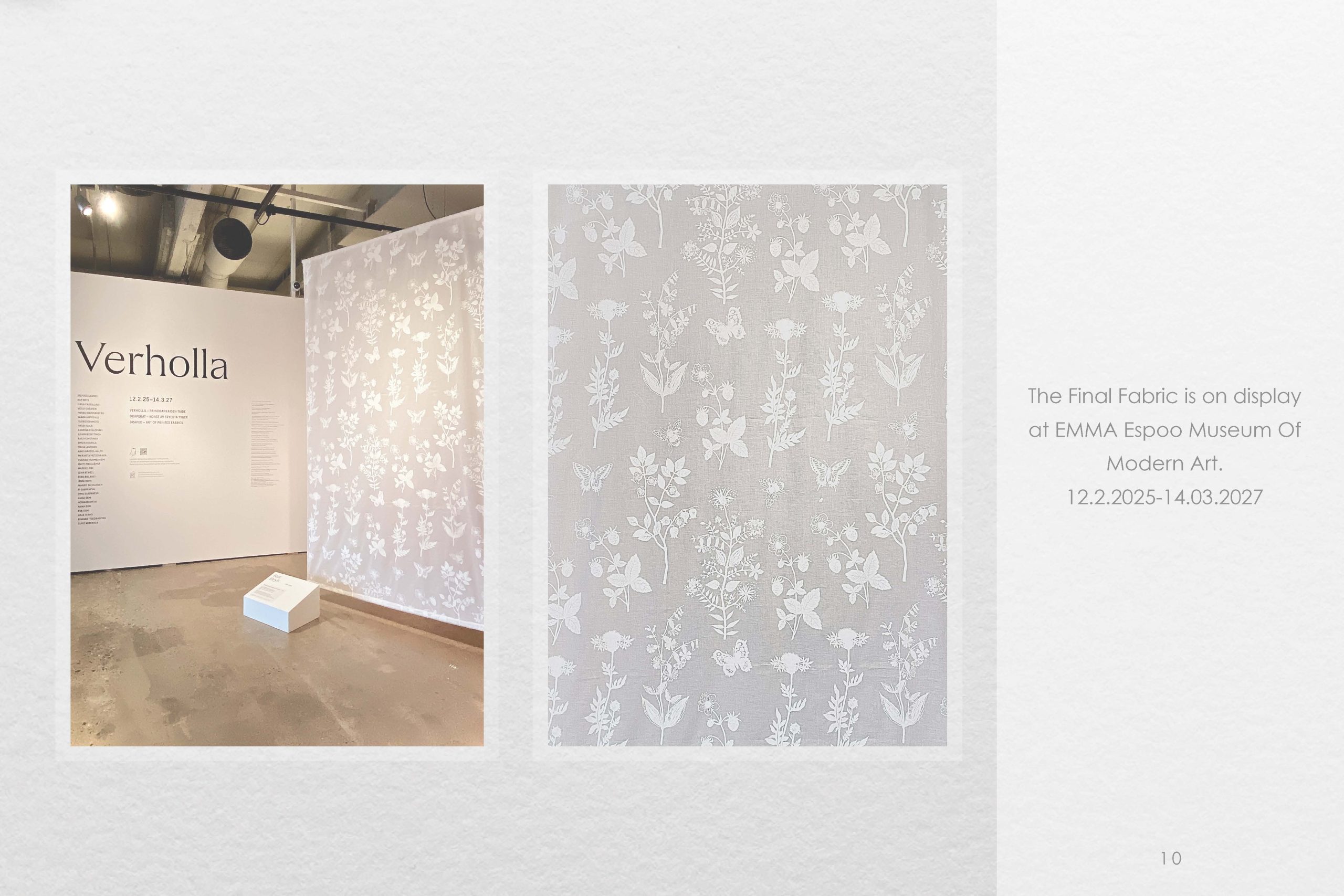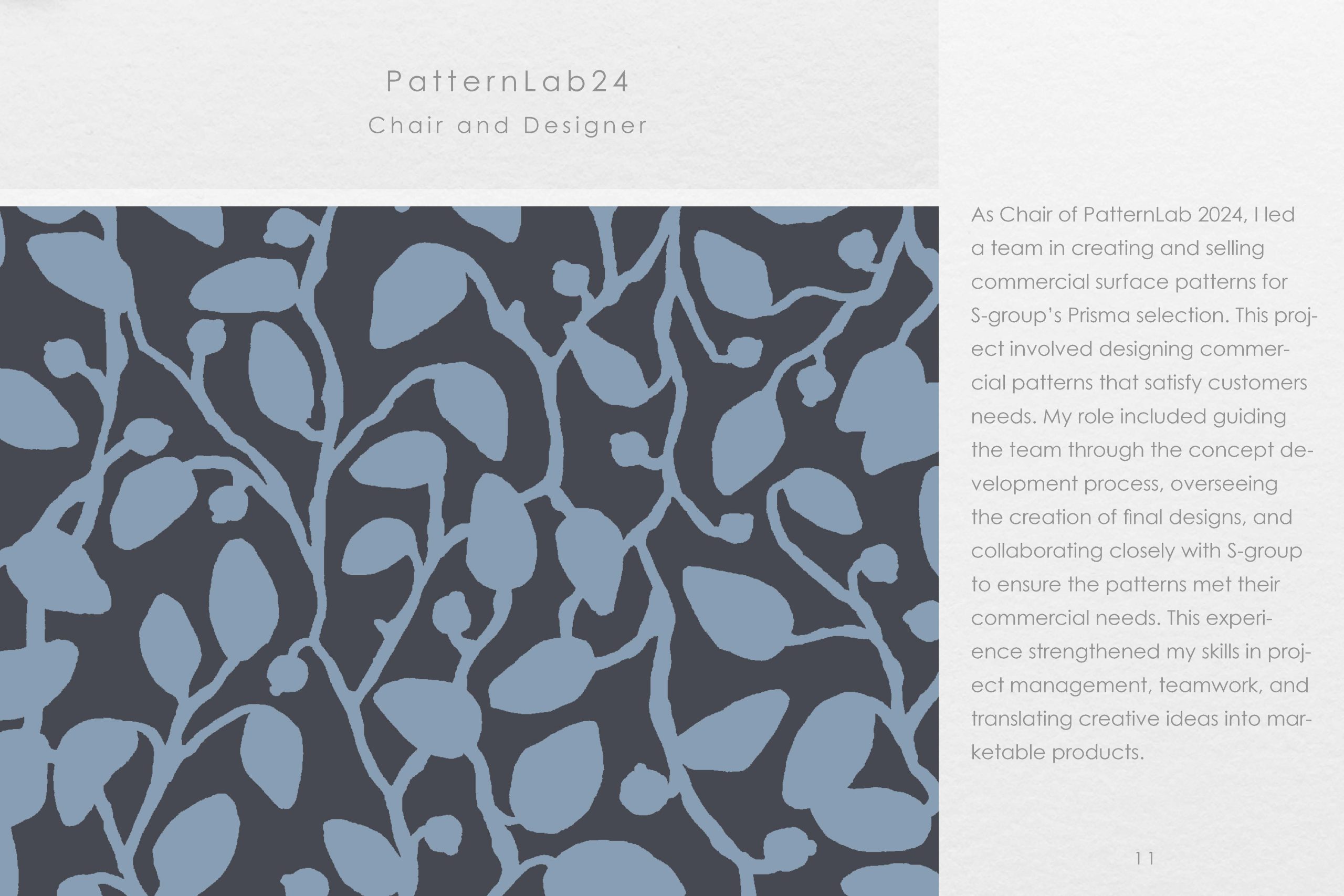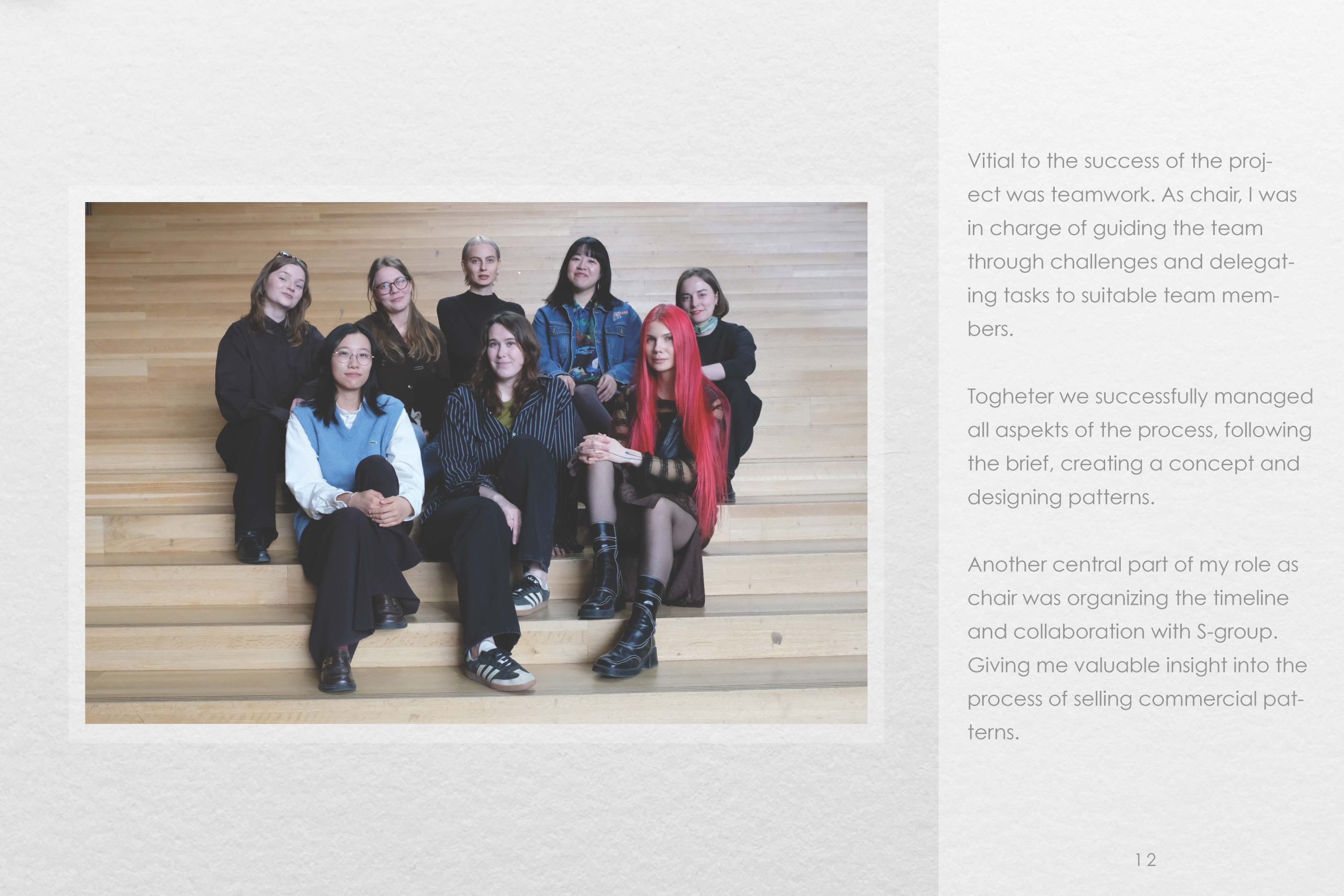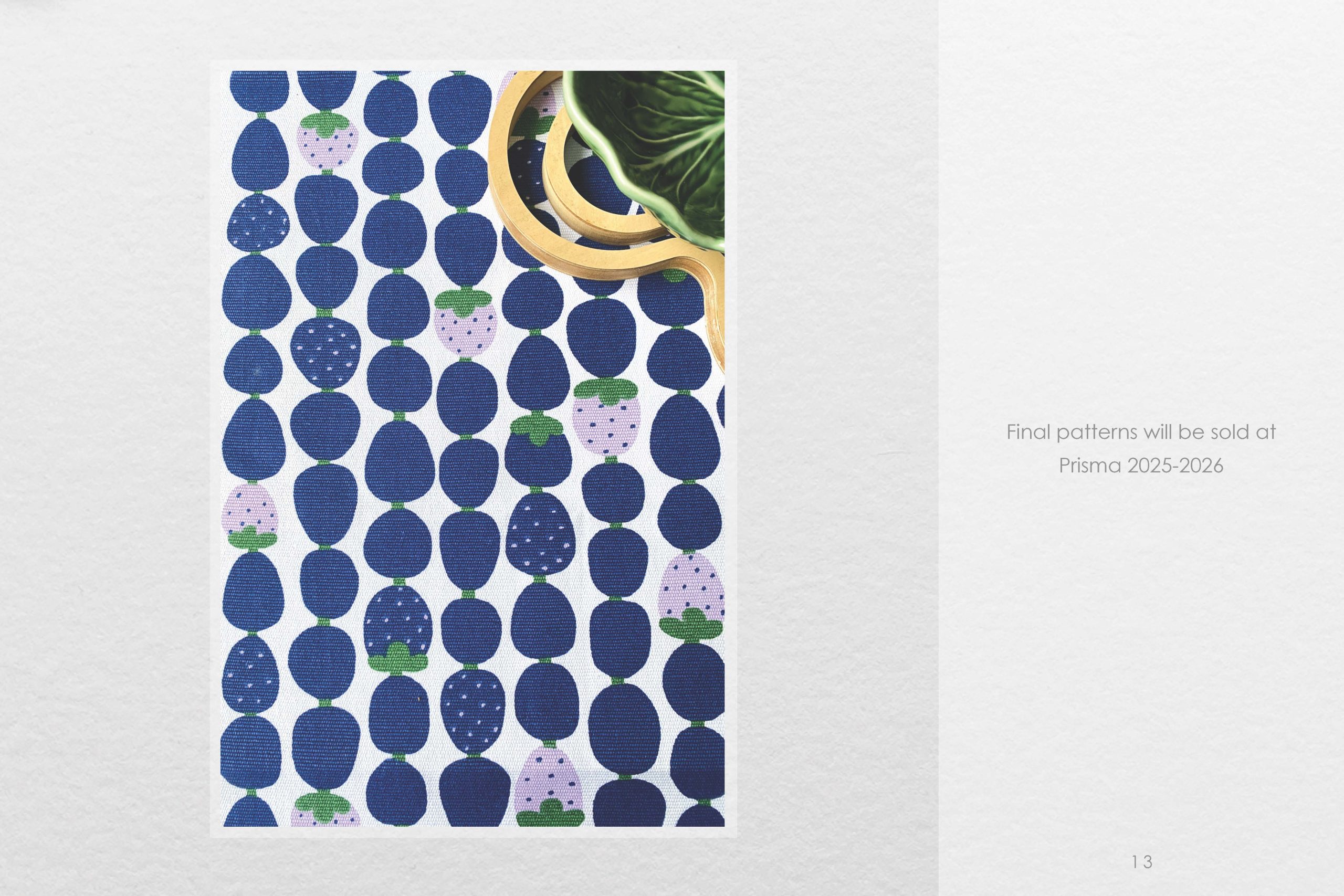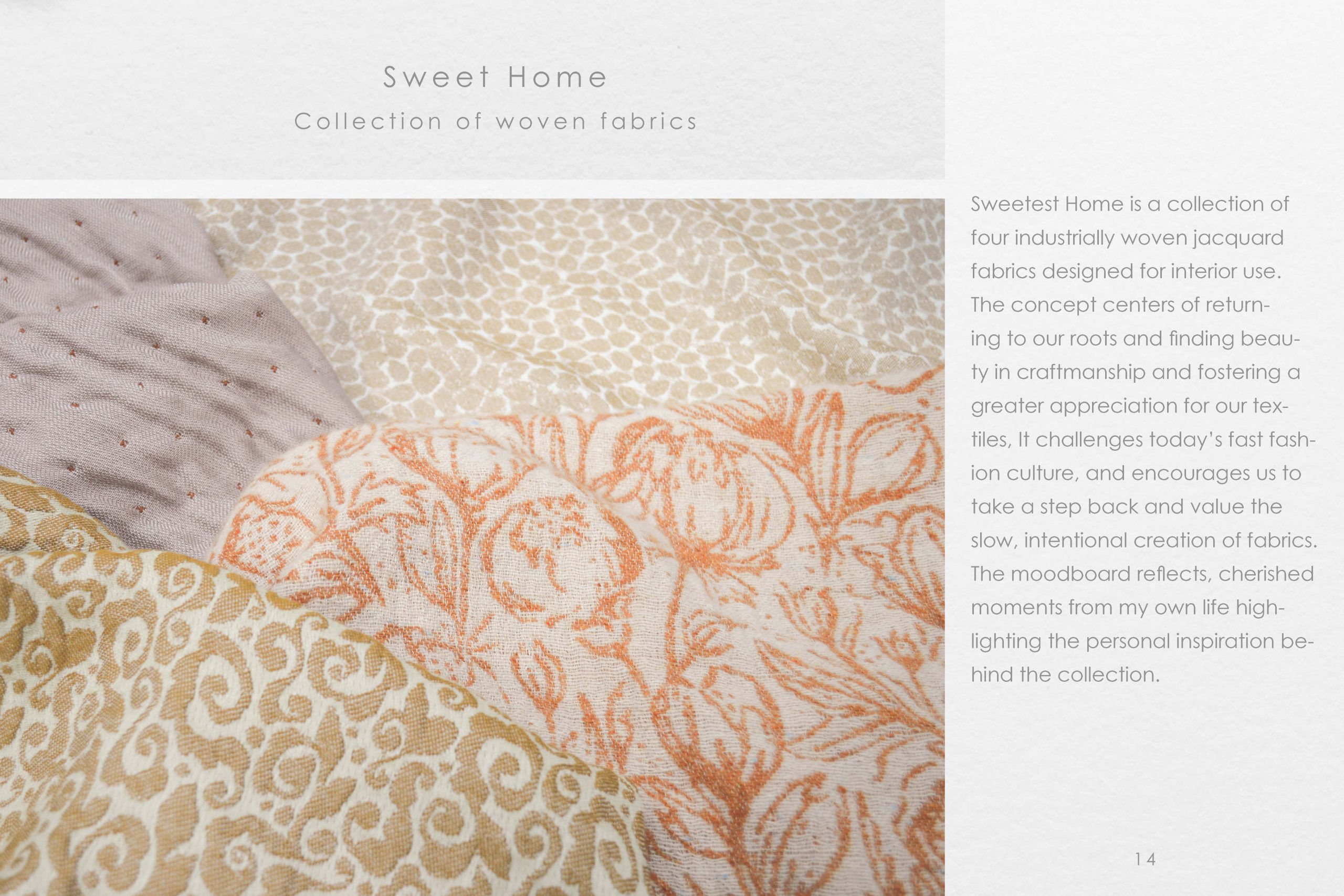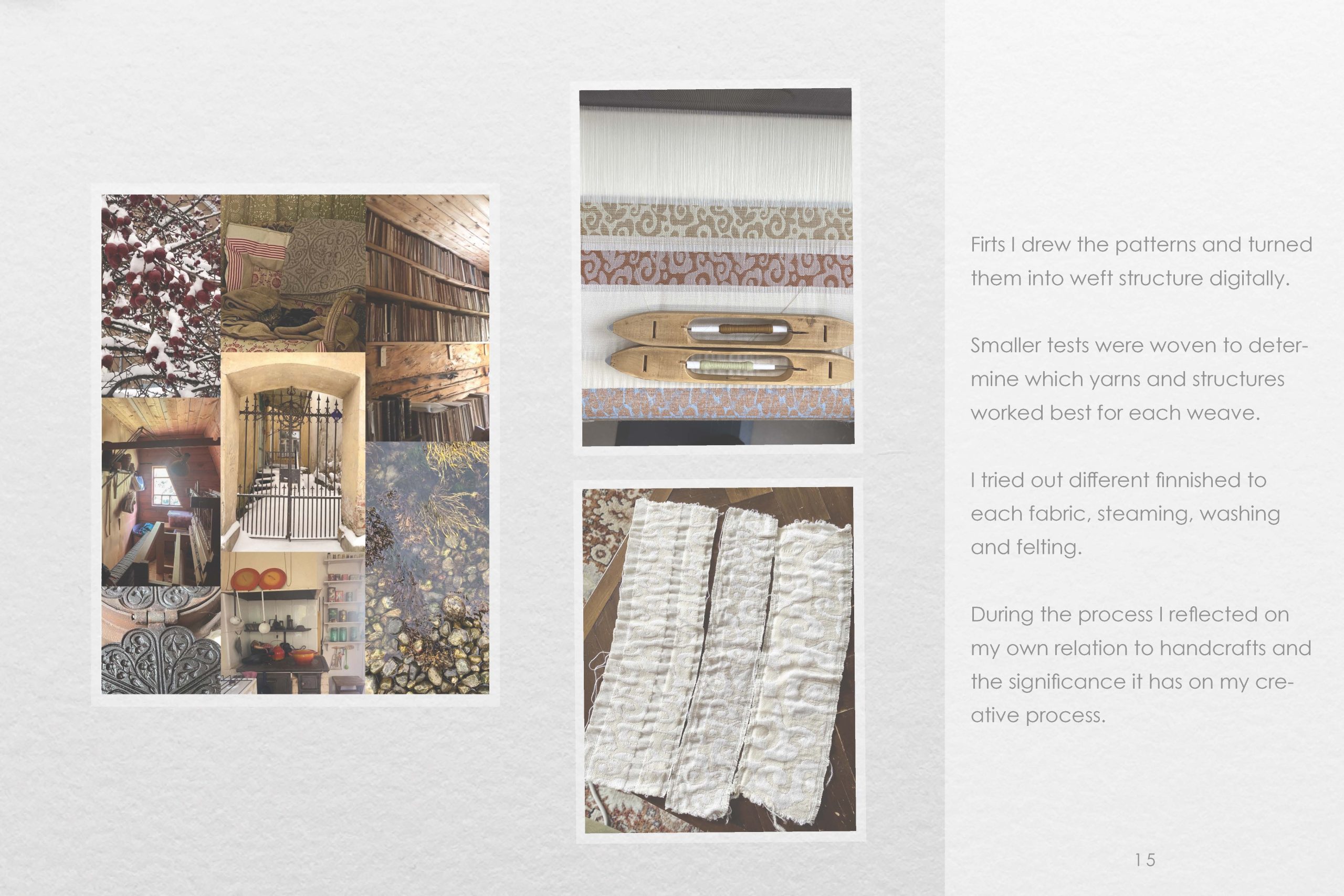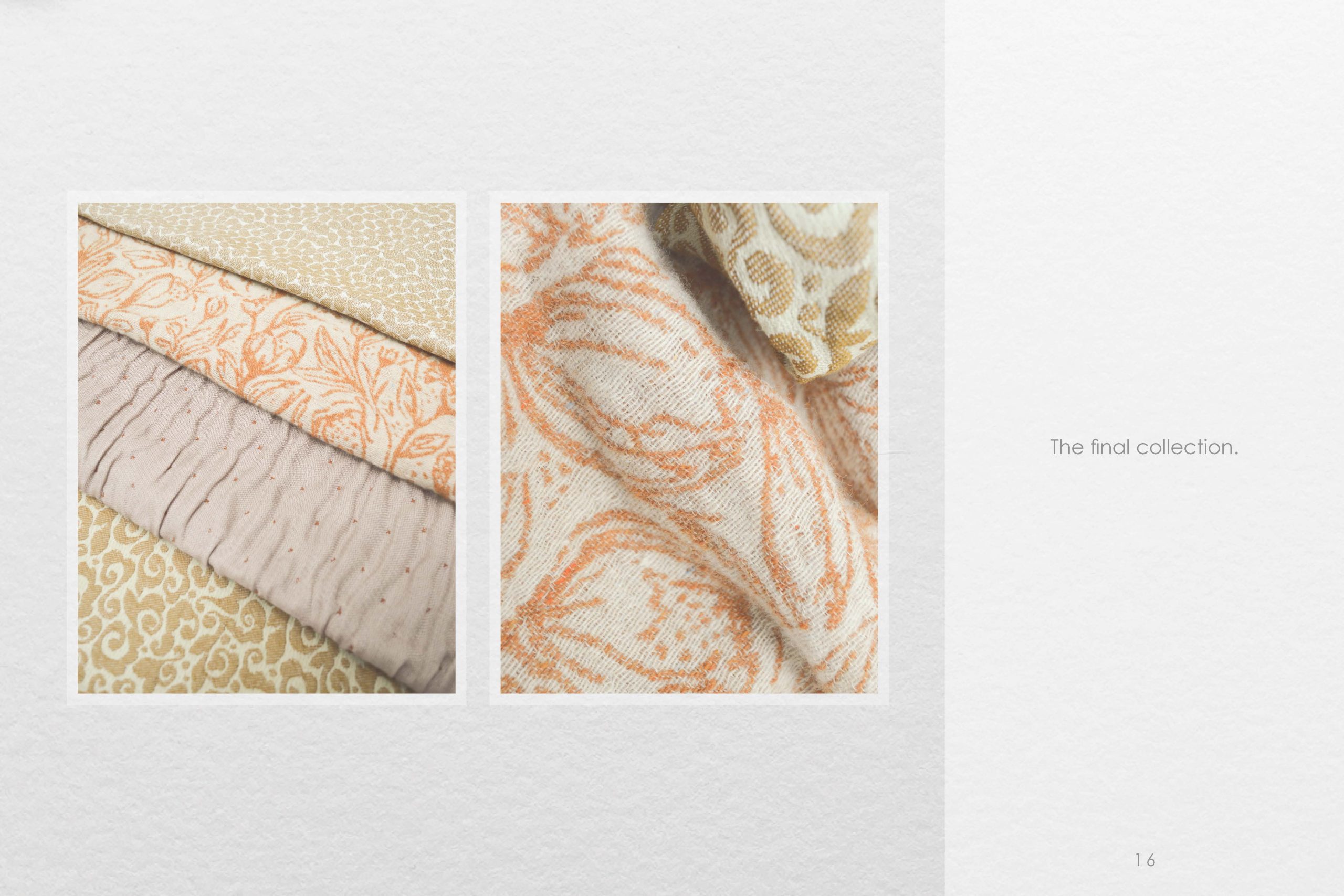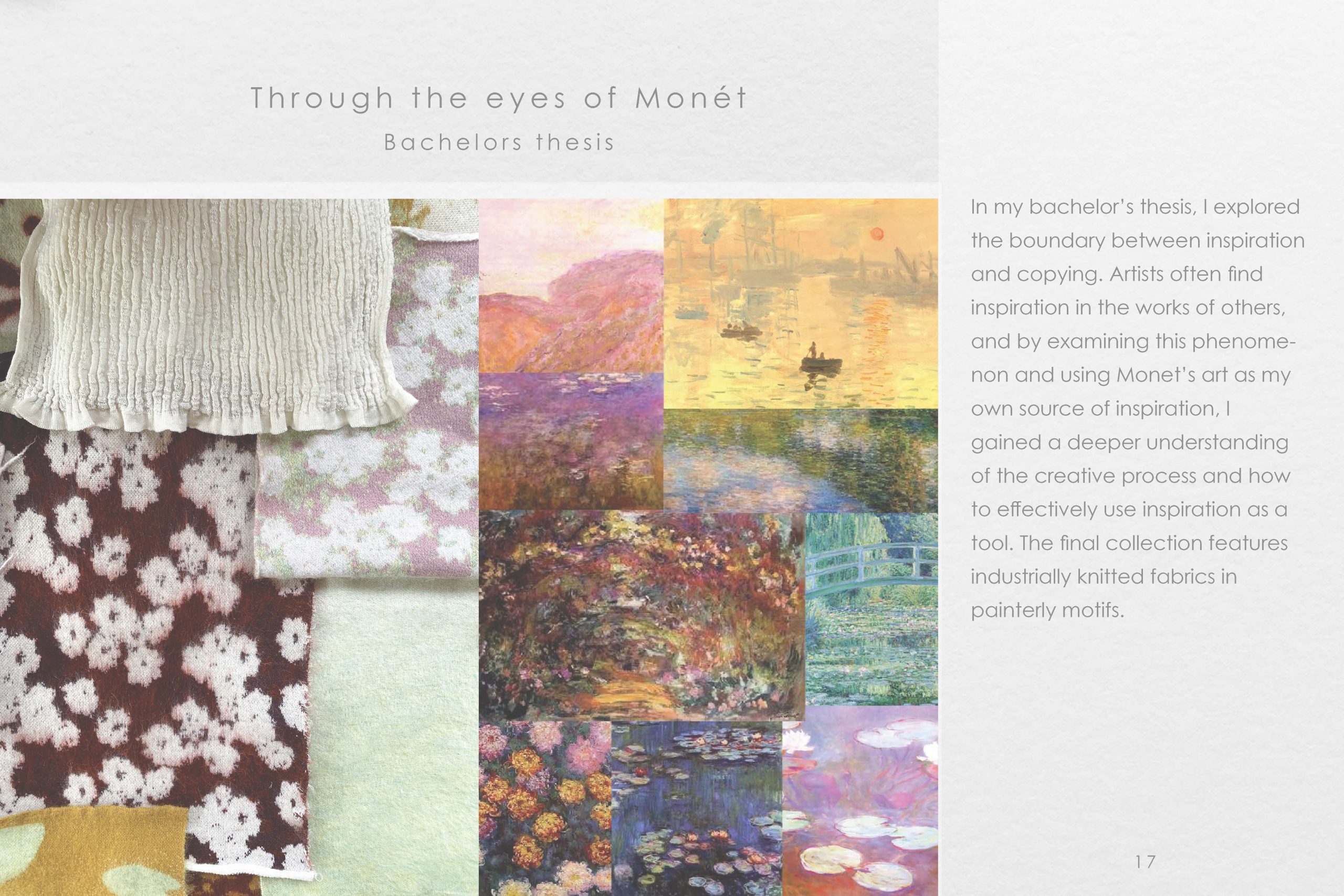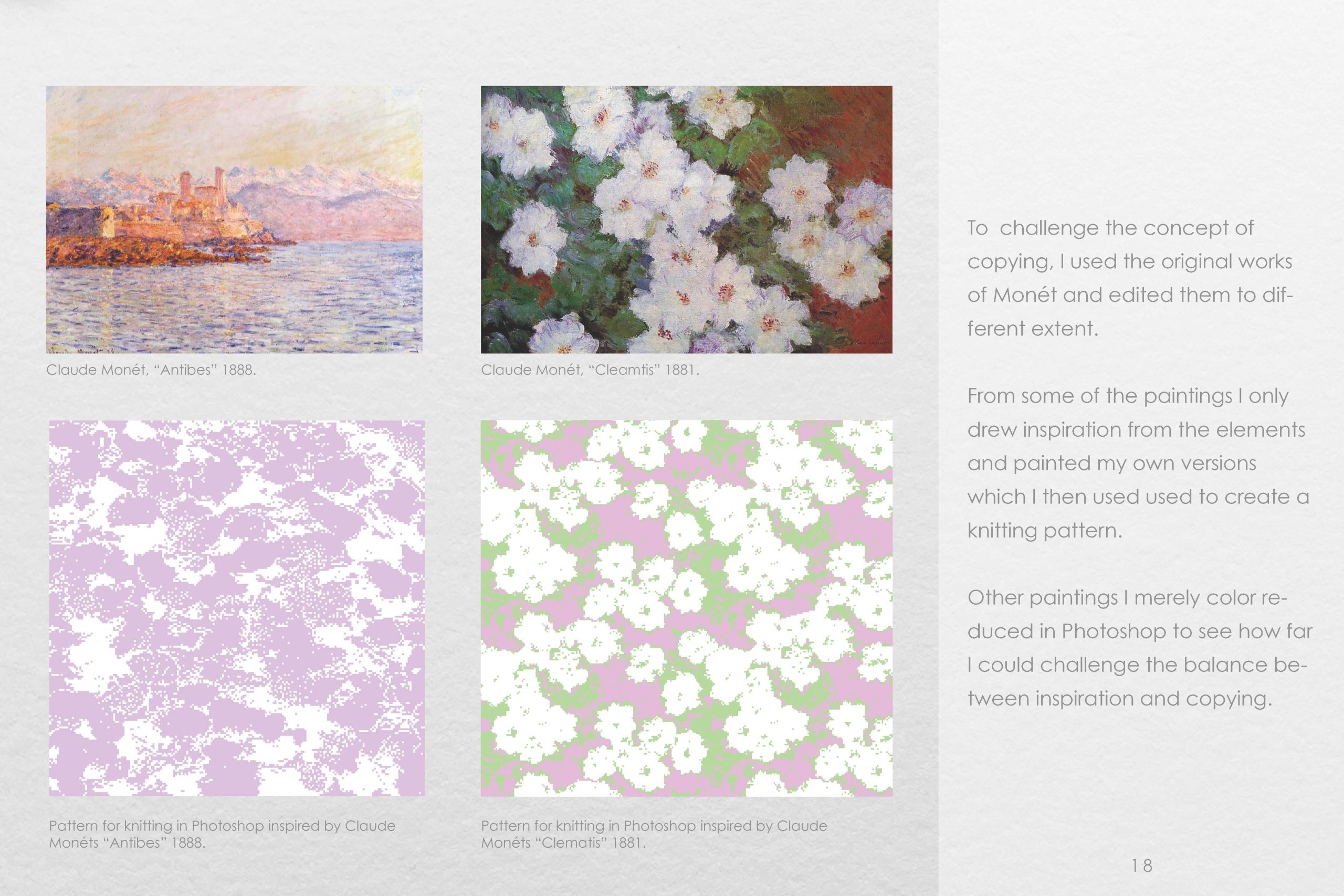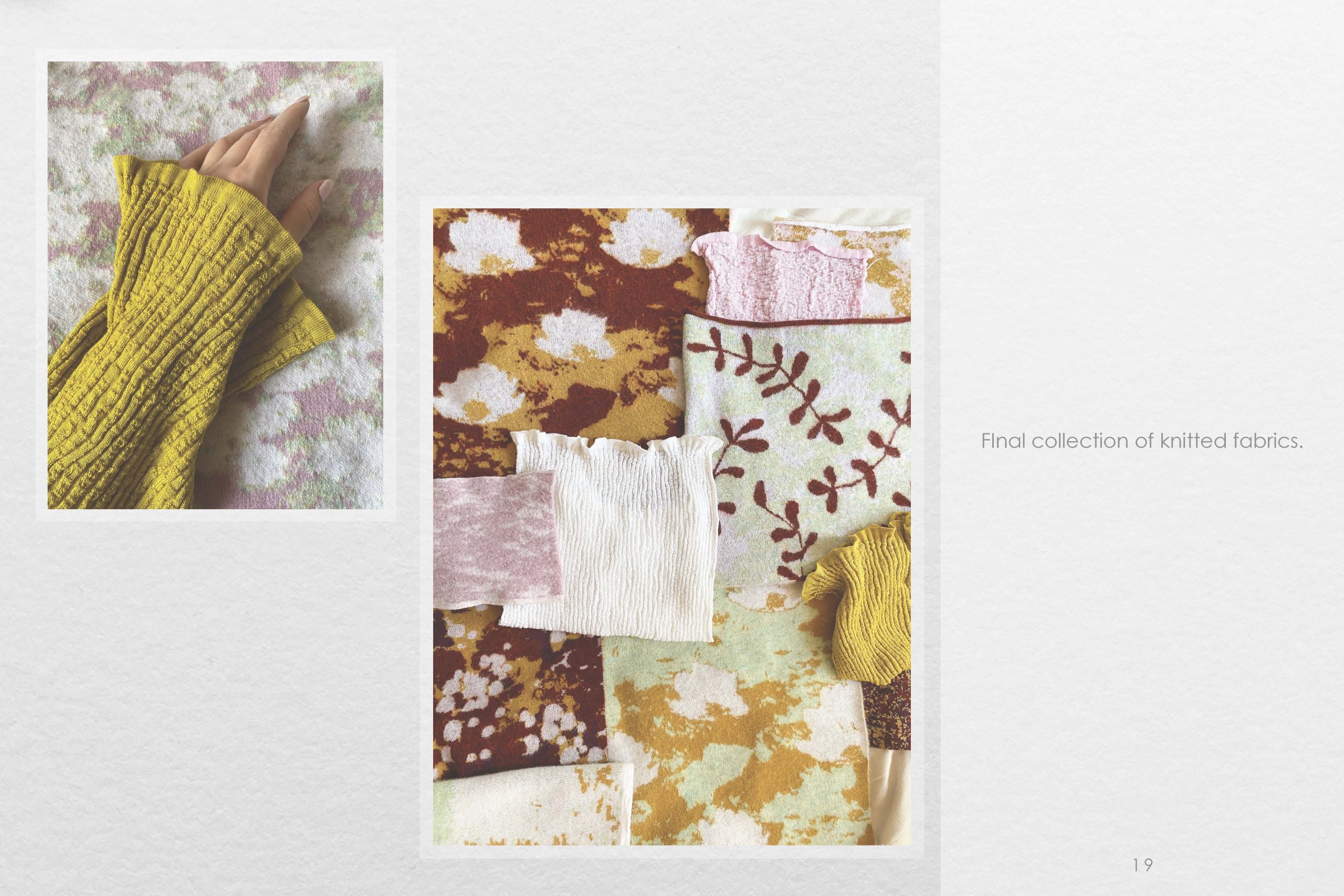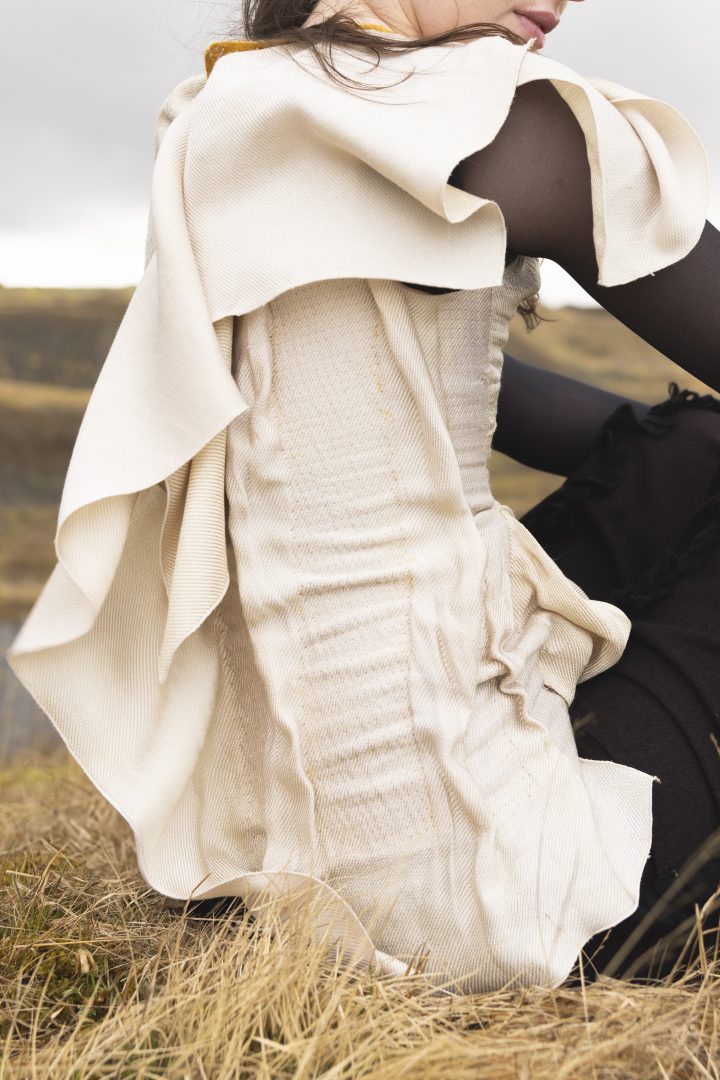Ella Fabritius
(MA)
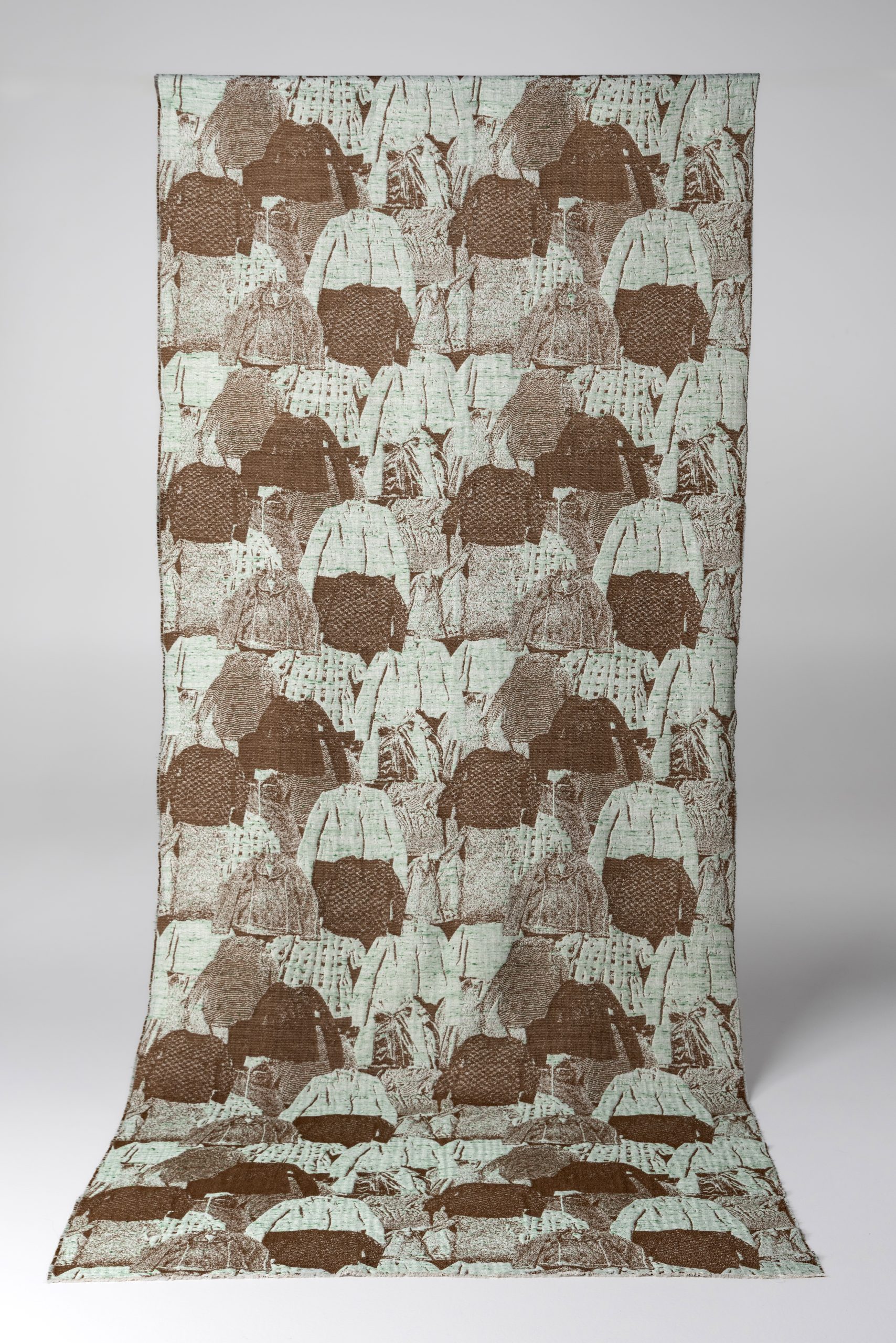
Garments left unsold
The tapestry reflects conflicting thoughts faced during thesis writing within a research project: a designer longing to create while resisting the production of unnecessary objects in an oversaturated world. The research examines why so many second-hand garments go unsold, exposing systemic issues in the textile industry and searching for how we, as designers, can adapt our practice to further sustainability. Woven from second-hand yarn, the piece embodies both the problem and the potential for change.
SUPPORT
European Union’s Horizon 2020 research and innovation programme, Textile Recycling Excellence, T-REX project
ADVISORS
Elina Lewe, Essi Karell
SUPERVISOR
Kirsi Niinimäki
(IG)
@ ella_fabritius
In her MA thesis, Ella Fabritius delves into the issue of unsold second-hand clothing. Despite growing awareness around sustainability, large amounts of clothing continue to be produced, garments that often end up in the second-hand system. Her research explores which types of garments fail to find a second home and what drives or deters consumers when shopping second-hand. Through analysing 400 unsold garments and group interviews with second-hand consumers, Fabritius uncovers critical patterns that reveal consumer behaviour and systemic issues in the fashion industry.
– News about the negative impact of textile production is consistent. I want to believe that learning and taking action can have an impact, so by immersing myself in the topic, I want to learn how to make well-informed and impactful decisions in my future career, Fabritius writes in her thesis.
Viewing her findings through the lens of a designer, Fabritius found herself at a creative crossroads. The tension between her desire to create and the reality of global overproduction sparked a deeply personal reflection that culminated in a woven tapestry. Crafted from second-hand yarn, the tapestry materialises the inner conflict of a designer who is driven to create yet seeks to resist contributing to a world already overwhelmed.
The pattern of the jacquard-woven fabric is derived directly from images of the unsold garments examined during her research. The visual composition brings these forgotten clothes into focus once again, transforming statistical data into a layered, emotional, and tactile narrative. Fabritius invites fellow designers to learn from the unsold and to design not only with creativity, but with responsibility.
